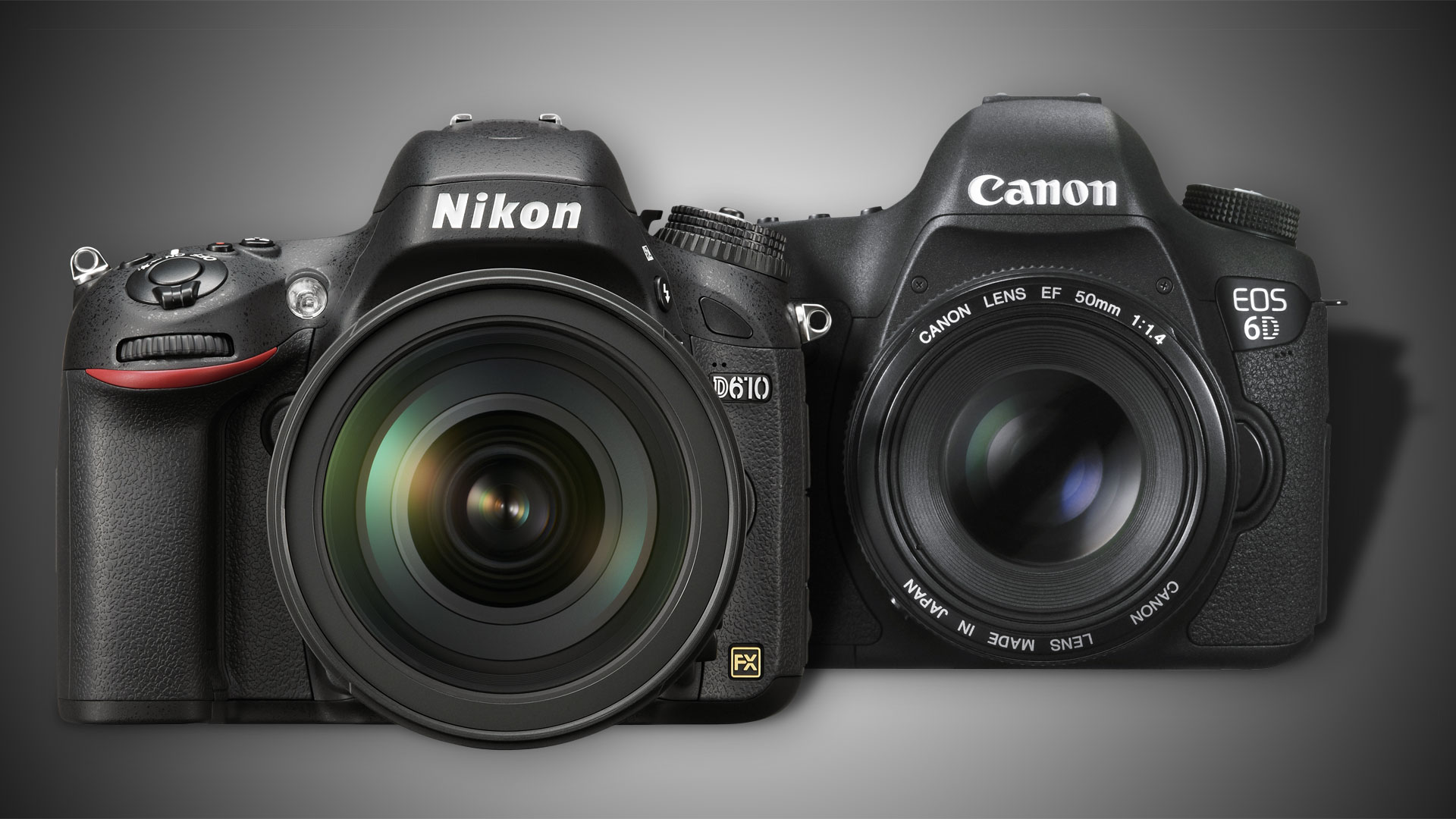Nikon D610 vs Canon 6D: best full frame DSLR on a budget
12 things you need to know to help you choose between the two top budget full frame DSLRs

A full frame DSLR is the dream camera for most photography enthusiasts. You get double the sensor size of a regular APS-C DSLR and this gives super-smooth tonality, low noise and great depth of field effects.
You can get all the latest camera reviews and news on the Techradar Camera Channel home page, but you might have missed the Nikon D610 review and the Canon 6D review because the Nikon was launched a year ago and the Canon is two years old. This means both are well into their product life cycle, but this is often the best time to buy expensive technology – as the prices prove, because both cameras are now 30% cheaper than when they were launched.
Full frame DSLRs are expensive, even the entry-level models. The Nikon D610 was launched in October 2013 at a price of £1,800/US$2,000/AU$2,300. Its budget full frame rival, the Canon EOS 6D, arrived a year earlier in September 2012, at a price of £1,800/US$2,100/AU$2,400. Back then, both cost around twice as much as a top APS-C format enthusiasts DSLR.
So both are now several hundred pounds/dollars cheaper – almost within spitting distance of a top APS-C camera. But even if a full frame DSLR is now an affordable option, which one do you choose? Here's a blow-by-blow comparison of the Nikon D610 vs Canon 6D.
01 Sensor
Both cameras have full frame sensors that are the same size as a frame of 35mm film – 36 x 24mm (actually, the Nikon's is 35.9 x 24mm, but that's not enough to make any difference). Both sensors have regular anti-aliasing filters to prevent moiré effects – the trend for removing them to improve fine detail rendition hasn't reached this part of the market yet.
02 Megapixels
Their megapixel ratings are broadly similar: The Nikon D610 has 24.3 megapixels, while the EOS 6D has 20 megapixels. The Nikon has a small advantage, then, but it's not particularly significant – other factors will be just as important.
03 Autofocus
The D610 has a Multi-CAM 4800 sensor, with 39 autofocus points, of which nine are the more sensitive cross type. This is quite a low number for the Nikon range – the next model up, the D750, has 51 AF points, with 15 cross-type.
Sign up for breaking news, reviews, opinion, top tech deals, and more.
Even so, the D610 looks like it should walk all over the Canon 6D in this area because the Canon has just 11 AF points, with only the central point being cross type. There's not much difference in terms of coverage though, because both cameras cluster their points tightly at the centre of the frame, so the benefit of the Nikon's extra points is lessened a bit.
The 6D does have a card up its sleeve, though: its central point is super-sensitive, working in a quarter as much light as the D610.
However, Nikon's camera can autofocus with lens/teleconverter combinations that have a maximum aperture of f/8, while the 6D AF bottoms out at f/5.6, despite that super-sensitive AF point in the centre.
04 ISO range
It's an easy win for Canon in the sensitivity area. The D610's native ISO range is 100-6400, expandable to 50-12800. The EOS 6D's native range is 100-25,600, two stops higher, and can be expanded to 50-102,400, which is two further stops on the high end.
05 Shutter speeds
Shutter speed ranges are identical, with both cameras able to take exposures as long as 30 seconds (without using Bulb mode) all the way to 1/4000 of a second at their fastest. Burst rates are similar, with the D610 capable of 5.5 frames per second and the 6D managing 4.5. Neither are action specialist cameras, but the figures are respectable and the Nikon has the edge.
06 Viewfinders
The Nikon just edges it here, too. Both cameras use an optical pentaprism, but the D610's shows a 100% view compared to the 6D's 97%. This means you may rarely find something in the extreme edge of a 6D photograph you didn't expect, as the viewfinder doesn't show the whole scene being captured. Having said that, the difference is small so you might not even notice.